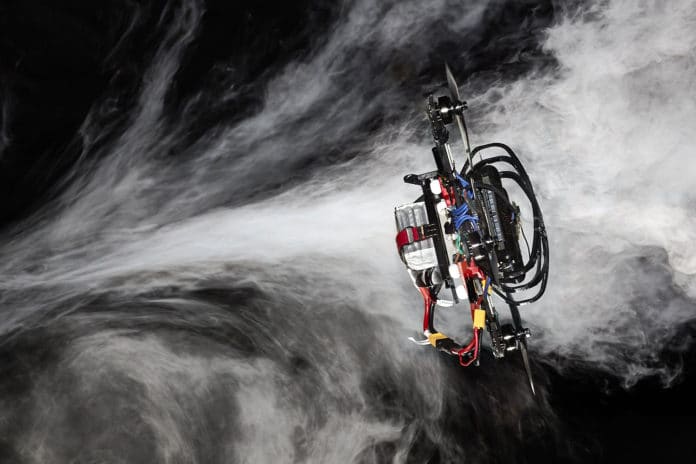Drones are among the most agile flying robots. These flying devices are using in various applications like searching for survivors on a disaster site, inspecting a building, delivering cargo, finding fallen meteorites, and drone racing. The routes they take are sometimes complex and narrow, which require precision flying.
Up to now, the best human drone pilots would always outperform autonomous systems in drone racing. Now, researchers at the University of Zurich (UZH) have created a novel algorithm that can plot a flight path with great efficiency.
The algorithm can find the quickest trajectory to guide a quadrotor – a drone with four propellers – through a series of waypoints on a circuit. And indeed, in testing, it outperformed world-class human pilots.
The team says that previous algorithms for autonomous drones would rely on simplifications of either the quadcopter system or the description of the flight path. Their novel algorithm improves on these by more accurately considering the drones’ limitations and calculating “time-optimal trajectories.”

“The key idea is, rather than assigning sections of the flight path to specific waypoints, that our algorithm just tells the drone to pass through all waypoints, but not how or when to do that,” says Ph.D. student Philipp Foehn.
In an experiment, the researchers had the algorithm and two human pilots fly the same quadrotor through a race circuit. They employed external cameras to precisely capture the motion of the drones and – in the case of the autonomous drone – to give real-time information to the algorithm on where the drone was at any moment. The control of the drone was then given to the two human pilots, who were given the opportunity to practice on the circuit before the race.
The algorithm-driven drones won, as all its laps were faster than the human ones, and the performance was more consistent. This is not surprising because once the algorithm has found the best trajectory, it can reproduce it faithfully many times, unlike human pilots.
Currently, the algorithm takes about an hour of computing to calculate the time-optimal trajectory. Also, at the moment, the drone relies on external cameras to compute where it was at any moment. The researchers are looking to address these two factors before the algorithm finds its way into commercial applications – reducing the computational demands of the algorithm and enabling it to rely on onboard cameras.
But the demonstration that an autonomous drone can, in principle, fly faster than human pilots is promising. “This algorithm can have huge applications in package delivery with drones, inspection, search and rescue, and more,” says Davide Scaramuzza, who heads the Robotics and Perception Group at UZH and the Rescue Robotics Grand Challenge of the NCCR Robotics, which funded the research.
